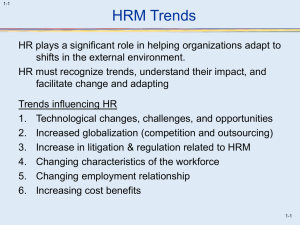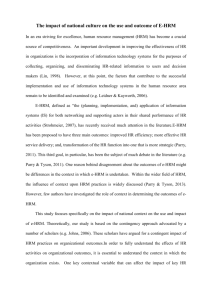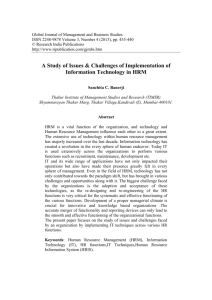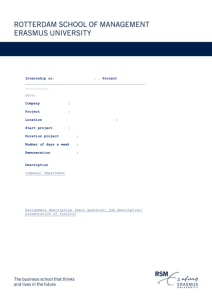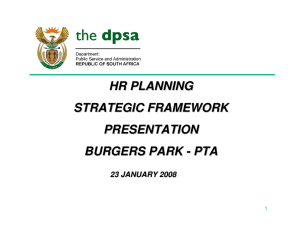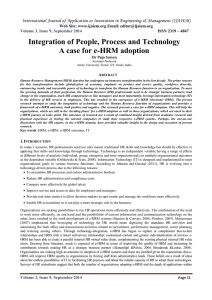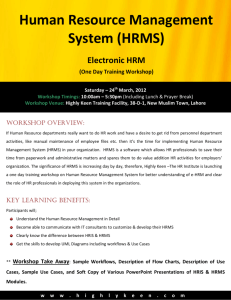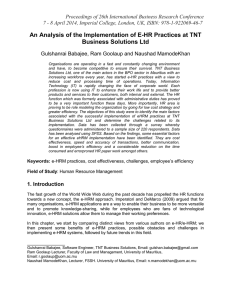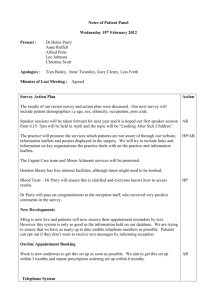RESEARCH AT CRANFIELD SCHOOL OF MANAGEMENT
advertisement
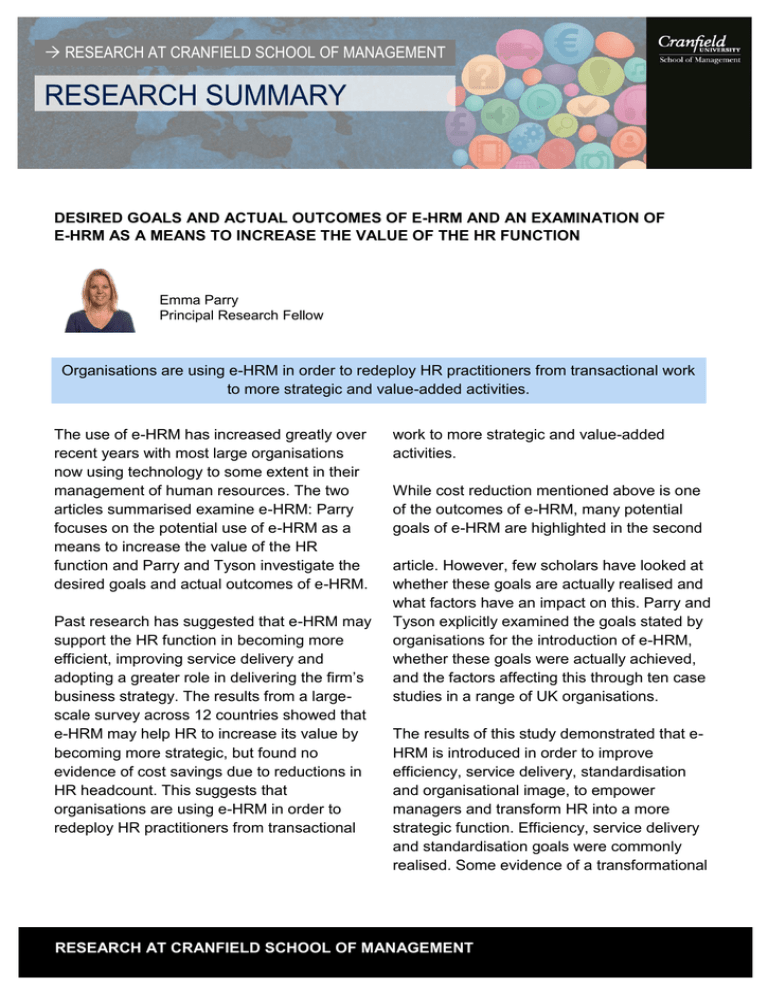
RESEARCH AT CRANFIELD SCHOOL OF MANAGEMENT DESIRED GOALS AND ACTUAL OUTCOMES OF E-HRM AND AN EXAMINATION OF E-HRM AS A MEANS TO INCREASE THE VALUE OF THE HR FUNCTION Emma Parry Principal Research Fellow Organisations are using e-HRM in order to redeploy HR practitioners from transactional work to more strategic and value-added activities. . The use of e-HRM has increased greatly over recent years with most large organisations now using technology to some extent in their management of human resources. The two articles summarised examine e-HRM: Parry focuses on the potential use of e-HRM as a means to increase the value of the HR function and Parry and Tyson investigate the desired goals and actual outcomes of e-HRM. Past research has suggested that e-HRM may support the HR function in becoming more efficient, improving service delivery and adopting a greater role in delivering the firm’s business strategy. The results from a largescale survey across 12 countries showed that e-HRM may help HR to increase its value by becoming more strategic, but found no evidence of cost savings due to reductions in HR headcount. This suggests that organisations are using e-HRM in order to redeploy HR practitioners from transactional work to more strategic and value-added activities. While cost reduction mentioned above is one of the outcomes of e-HRM, many potential goals of e-HRM are highlighted in the second article. However, few scholars have looked at whether these goals are actually realised and what factors have an impact on this. Parry and Tyson explicitly examined the goals stated by organisations for the introduction of e-HRM, whether these goals were actually achieved, and the factors affecting this through ten case studies in a range of UK organisations. The results of this study demonstrated that eHRM is introduced in order to improve efficiency, service delivery, standardisation and organisational image, to empower managers and transform HR into a more strategic function. Efficiency, service delivery and standardisation goals were commonly realised. Some evidence of a transformational RESEARCH AT CRANFIELD SCHOOL OF MANAGEMENT impact of e-HRM was found, as the HR staff had more time and information to support the organisation in achieving its business strategy. However, no evidence was found of an actual increased involvement of HR in business decision making. These two studies suggest that organisations are using e-HRM in order to redeploy HR practitioners from transactional work to more strategic and value-added activities. Parry, E. & Tyson, S. (2011) Desired goals and actual outcomes of e-HRM, Human Resource Management Journal, vol. 21, no. 3, pp. 335–354 & Parry, E. (2011) An examination of e-HRM as a means to increase the value of the HR Function, International Journal of Human Resource Management, vol. 22, no. 5, pp. 1146–1162 For further details on these research papers please contact: emma.parry@cranfield.ac.uk WATCH THE VIDEO INTERVIEW Management Theme: Managing People and Global Careers http://tinyurl.com/czbnt8h MANAGEMENT THEMES AT CRANFIELD SCHOOL OF MANAGEMENT Business Economics and Finance Business Performance Management Corporate Responsibility and Sustainability Entrepreneurship and Business Growth General Management Information Systems Innovation and Operations Management Leadership Managing People and Global Careers Marketing, Sales and Client Relationships Programme and Project Management Strategy, Complexity and Change Management Supply Chain and Logistics Management
